Enjoy your weekend.
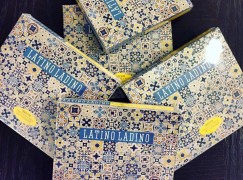
Enjoy your weekend.

The question is posed by James MacMillan in the new issue of Standpoint magazine. He provides a list to show the symphonic impulse is still alive and well, still the benchmark of creative ambition:
Hans Werner Henze wrote ten. Alfred Schnittke also wrote ten, and so far Peter Maxwell Davies has also written ten. Michael Tippett wrote four. It was obviously a viable form and concept for these titans of modern music. But there are many others who would never have given the question a second thought — Boulez, Birtwistle, Lachenmann. Is it just the more “conservative” composers of our time who are interested in the symphony? No doubt there will be strident voices from the avant-garde hard-line who would maintain just that. But what makes Maxwell Davies conservative? Perhaps this leads to the impossibility of defining the word and idea. Can anything be a symphony now? Galina Ustvolskaya’s Fifth Symphony is about ten minutes long, scored for only five players and involves an actor reciting the Lord’s Prayer in Russian. Her Fourth Symphony is for voice, piano, trumpet and tam-tam and lasts only six minutes. Concepts of musical conservatism and radicalism have a tendency to wax and wane in our own time, so who knows how the self-proclaimed radicals of our age will be viewed decades hence?
But is it? Read the full essay here.

He has all the necessary enthusiasm and the beginnings of a critical perspective.
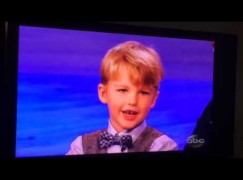
This just in from Jean Saad, head of sponsorship and merchandising at Air Canada. It sounds fit for purpose.
Dear…
I am very happy to announce to you that Air Canada has introduced a new policy in favor of musicians traveling with instruments!
Effective today, customers may purchase a seat at a 50 per cent discount off any published fare, including the lowest Tango fares, to accommodate their musical instrument.
Also effective today, all customers travelling with instruments as carry-on on Air Canada, Air Canada Express and Air Canada rouge flights have the opportunity to pre-board ahead of general boarding to ensure their instruments may be conveniently and securely stowed close by.
I am also pleased to inform you that Air Canada has added Symphony Nova Scotia and the Calgary Philharmonic Orchestra to its roster of Canadian symphony orchestras it supports from coast to coast, making Air Canada the Official Airline of nine of the country’s leading symphony orchestras.
Today at 11ET, our VP-Marketing Craig Landry will be making those two announcements in his speech at Symphony Nova Scotia’s Symphony Week concert at Halifax’s Stanfield International Airport.
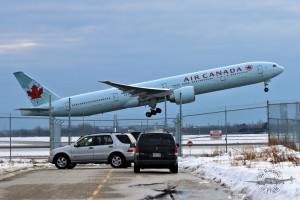
More details:
We are happy to introduce a few enhancements to our carry-on baggage policy that will be of great interest to you if you travel with a musical instrument.
In addition to our current policy that ensures items which meet our carry-on size requirements * can be brought on board and stored in the overhead bins or under the seat in front of you, we now offer a 50% discount off any fare, including the lowest available one, to customers who would like to purchase a seat to accommodate their musical instrument in the same cabin that they are booked in.
And if you’re traveling with a musical instrument as carry-on, you will now be invited to board the plane during pre-boarding in advance of general boarding so you’ll have a little more time to store your precious possession in an overhead bin close to your seat. If you need help with this, our flight attendants will be happy to assist.
We take every care when transporting all of our customers’ belongings. But please remember that, because of their fragile nature, musical instruments should always be properly packaged in a rigid and/or hard shell container . This is especially important in the event that your musical instrument needs to be checked at the gate if it is not possible to accommodate it on board because of passenger loads, aircraft limitations or insufficient storage space.
Read our complete policy on travelling with a musical instrument.
* String instruments (e.g. guitars, violins and violas) can be carried on board – even if their dimensions slightly exceed our carry-on size limits.
Patricia Hammond, a London-based mezzo from Canada, has put heart and soul into making an authentic recording of songs from both sides in the First World War. But can she get a review? Editors complain that the music does not fall into any recognised genre and refuse to assign it. Absurd but true.
What does Patricia have to do to get a flash of attention?
Here’s her experience, confessed to Slipped Disc.
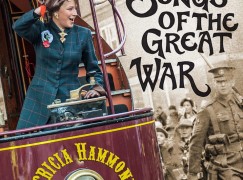
I have released an album of songs of the First World War.
It presents the sound-world of the 1910s, painstakingly reconstructed with original instruments and instrumentations. It was funded by Ian Rosenblatt, so my colleague Matt Redman could take all the time he needed to transcribe from sources, train musicians unused to this particular style, and expand the original sheet music outward in arrangements that would have been at home in the West End salons of the second decade of the 20th century. My own research started when I was eight, listening to 78rpm records in my parents’ basement.
We have presented music from the pacifists and the Germans as well as some neglected gems that have, as far as I know, never been recorded. We performed it in a wooden studio with very little separation, gathered together as musicians would have gathered around an Edwardian recording horn.
And can we get a review, or a mention in a newspaper?
Classical editors tell me it’s jazz. Jazz editors tell me it’s classical.
Aside from works by Eric Coates, Cecil Forsyth and Herbert Ivey, all of whom are considered classical, we use such authentic instruments as a steel stringed guitar (a Gibson L-4 from 1911, especially designed to be heard without electronic amplification), an accordion and saxophone, not to mention a violin, cello, harp and flute.
The BBC Concert Orchestra often includes a guitar and drums in their lineup. Weill’s Mahagonny rejoices in banjo, steel guitar and woodblock, and Golden Age Broadway shows are now proudly presented by the likes of the ENO…to protest at their being included in a classical session is ridiculous.
But somehow we have fallen between two genres.
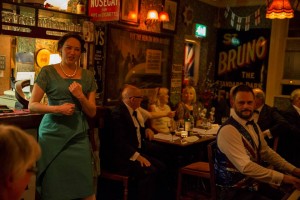
The 1910s was a time when new recording technologies caused a sudden flowering and cross-pollination of many musical trends. Parlours, Thé-chantants and dansants, recital halls and theatres burst with new ideas. There were no microphones, so ‘classical’ technique was essential. Jazz-style improvisation had yet to come. It’s perhaps unfortunate that the songs produced at the time proved so popular, as it’s the revivals that people associate with it, not the source. If You were the Only Girl in the World brings to mind the Good Old Days and pub singalongs, because nobody listens past the scratches in an old record to hear how it originally sounded.
Our 1910s bands, Ragtime Parlour and the Versatility Serenaders have performed at Orchestral “Lates”, museums and festivals, but always, always the categorisation issue crops up, as does our lack of representation by an agent. Parameters are narrow, and getting narrower, conversely, as music genres splinter and fan outward in new directions that defy classification. We joke that people like the Dolmetsch family were dismissed as cranks, and we see our Edwardian research as a new Period Performance category that just isn’t recognised yet.
I knew a feisty old fellow who had an independent record shop in the nineties, and gleefully put Emma Kirkby’s CDs in “Easy Listening”. People are entirely entitled to their opinions.
But Hell, if Purcell’s Bawdy catches, with titles like As Roger Last Night to Jenny Lay Close or Full Bags, a Brisk Bottle are happily reviewed by the arbiters of taste in the classical world, why not The Rose of No-Man’s Land?
What do I have to do to get a review?
The Hollywood actor is in Israel for the Jerusalem premiere and general release of her debut film as director. In A Tale of Love and Darkness she brings to the screen the autobiography of Israeli writer Amos Oz.
Natalie, who also co-wrote the script, plays the role of Oz’s mother, Fania. Portman, who was raised by Hebrew-speaking parents in the US, says the book reflects much of her own family history.
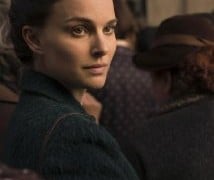
The music is by Nicholas Britell. The film has been shown at Cannes and Toronto film festivals.
He has been chief conductor with the BBC Symph since 2013. Today, Sakari Oramo renewed until 2020.
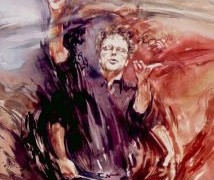
Mural by Norman Perryman
Here’s hoping the orch survives that long.
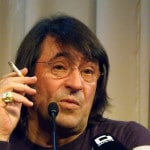
Yuri Bashmet, viola player and ensemble director, puffing away at a press conference yesterday in Rostov-on-Don.
There’s a swell of protest online at the truly appalling singing of the Rugby Union World Cup anthem by Paloma Faith, a throaty pop pusher. A petition has been launched to have her replaced.
Traditionalists are calling for the restoration of Dame Kiri, or Bryn Terfel. Gustav Holst is turning in his grave.
Sign the petition if you want to raise the stakes.

A message from new chief executive Cressida Pollock on ‘some of the exciting changes that are happening at ENO’:
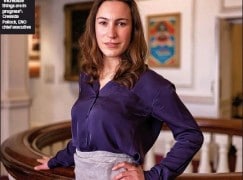
You will notice a few changes in the way that our brand looks and feels.
We have been looking at how we express the ENO brand, whether through the way that we look and the way that we write and speak, and also through our culture and the way we behave.
After some fantastic work by the team, and contributions from supporters, stakeholders and the public, we have gently updated our brand to reflect our renewed commitment to placing our audiences at the heart of everything we do.
You will see more of this in coming months – in the theatre, in our advertising and online. We hope you like these changes as we redouble our efforts to attract new audiences to opera, whilst taking care of our loyal patrons and customers.
Ms Pollock, 33, is a McKinsey’s management consultant who speaks and thinks jargon. No head of any other opera house on earth would talk of ‘expressing the brand’ or put ‘stakeholders’ before the paying public.
This unhappy new ENO puts image before art.
The hall he endowed for the New York Philharmonic was renamed yesterday.
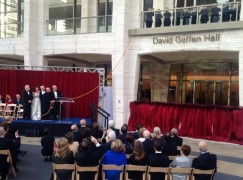
Avery Fisher, an enthusiastic violinist and electronics millionaire who died in 1994, gave his life for classical music.
David Geffen, a rock mogul, gave $100 million.
That’s why his name is now on the hall.
There is no room for sentiment in arts fundraising.
The Pope was a no-show for the season’s first symphony concert, but Oprah Winfrey and Barbra Streisand turned up on the red carpet and so did the biggest gift in 173 years of Philharmonic activity. The board chairman, Oscar Schafer, and his wife, Didi (pictured), gave $25 million.
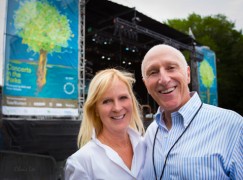
Just like that: $20m for the endowment and $5m for free concerts in the park. Mr Schafer is a hedge fund boss.
It is the rule in US arts organisations that the chairman gives the biggest check. That’s why Carnegie Hall is burning the midnight oil to find a replacement for Ronald Perelman, who fell out with the executive director and the rest of the board and won’t be giving them another cent.